Kia Niro Plug IN Hybrid 2018 Owner's Manual
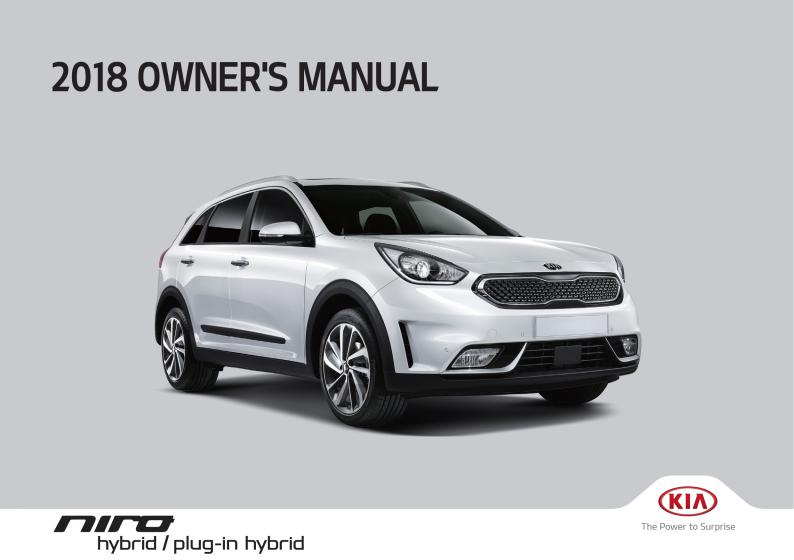

Kia, THE COMPANY
Thank you for becoming the owner of a new Kia vehicle.
As a global car manufacturer focused on building high-quality vehicles with exceptional value, Kia Motors is dedicated to providing you with a customer service experience that exceeds your expectations.
All information contained in this Owner’s Manual was accurate at the time of publication. However, Kia reserves the right to make changes at any time so that our policy of continual product improvement can be carried out.
This manual applies to all models of this vehicle and includes descriptions and explanations of optional as well as standard equipment. As a result, you may encounter material in this manual that is not applicable to your specific Kia vehicle.
Drive safely and enjoy your Kia! 

F o r e w o r d
Thank you for choosing a Kia vehicle.
When you require service, remember that your Kia dealer knows your vehicle best. Your dealer has factory-trained technicians, recommended special tools and genuine Kia replacement parts. It is dedicated to your complete customer satisfaction.
Because subsequent owners require this important information as well, this publication should remain with the vehicle if it is sold.
This manual will familiarize you with operational, maintenance and safety information about your new vehicle. It is supplemented by a Warranty and Consumer Information manual that provides important information on all warranties regarding your vehicle.
We urge you to read these publications carefully and follow the recommendations to help assure enjoyable and safe operation of your new vehicle.
Kia offers a great variety of options, components and features for its various models. Therefore, some of the equipment described in this manual, along with the various illustrations, may not be applicable to your particular vehicle.
The information and specifications provided in this manual were accurate at the time of printing. Kia reserves the right to discontinue or change specifications or design at any time without notice and without incurring any obligation. If you have questions, always check with your Kia dealer.
We assure you of our continuing interest in your motoring pleasure and satisfaction in your Kia vehicle.
© 2017 Kia MOTORS AMERICA, Inc.
All rights reserved. May not be reproduced or translated in whole or in part without the written consent of Kia Motors America, Inc.
Printed in Korea
 i
i
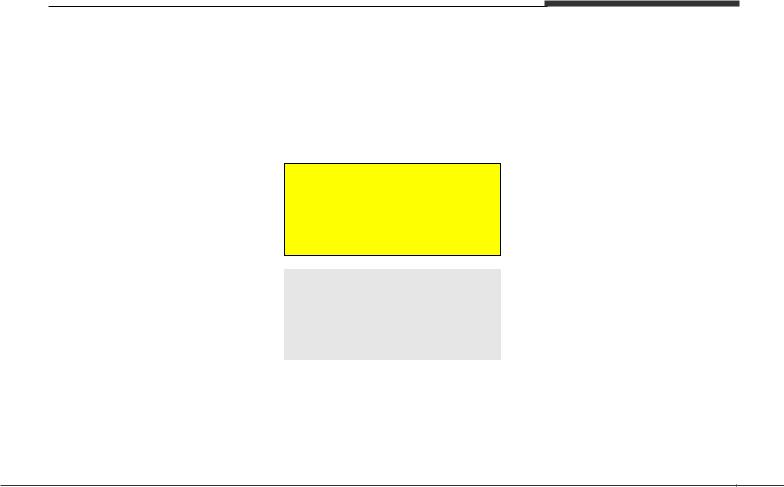
HOW TO USE THIS MANUAL
We want to help you get the greatest possible driving pleasure from your vehicle. Your Owner’s Manual can assist you in many ways. We strongly recommend that you read the entire manual. In order to minimize the chance of death or injury, you must read the WARNING and CAUTION sections in the manual.
Illustrations complement the words in this manual to best explain how to enjoy your vehicle. By reading your manual, you will learn about features, important safety information, and driving tips under various road conditions.
The general layout of the manual is provided in the Table of Contents. Use the index when looking for a specific area or subject; it has an alphabetical listing of all information in your manual.
Sections: This manual has nine sections plus an index. Each section begins with a brief list of contents so you can tell at a glance if that section has the information you want.
F o r e w o r d
You will find various WARNINGs, CAUTIONs, and NOTICEs in this manual. These WARNINGs were prepared to enhance your personal safety.You should carefully read and follow ALL procedures and recommendations provided in these WARNINGs, CAUTIONs and NOTICEs.
WARNING
A WARNING indicates a situation in which harm, serious bodily injury or death could result if the warning is ignored.
CAUTION
A CAUTION indicates a situation in which damage to your vehicle could result if the caution is ignored.
NOTICE
A NOTICE indicates interesting or helpful information is being provided.
 ii
ii

|
|
|
Introduction |
|
1 |
|
|
|
|
|
|
|
|
|
Your vehicle at a glance |
|
2 |
|
|
|
|
|
|
|
|
|
|
|
|
|
|
|
Safety features of your vehicle |
|
3 |
|
|
|
|
|
|
|
|
|
|
|
|
|
|
|
Features of your vehicle |
|
4 |
|
|
|
|
|
|
|
|
|
|
|
|
table of contents |
|
|
Audio system |
|
5 |
|
|
|
|||
|
|
|
|
|
|
|
|
|
Driving your vehicle |
|
6 |
|
|
|
|
|
|
|
|
|
What to do in an emergency |
|
7 |
|
|
|
|
|
|
|
|
|
Maintenance |
|
8 |
|
|
|
|
|
|
|
|
|
|
|
|
|
|
|
Specifications, Consumer information and Reporting safety defects |
|
9 |
|
|
|
|
|
|
|
|
|
Index |
|
I |
|
|
|
|
|
|

Hybrid System Overview
HEV (HYBRID ELECTRIC VEHICLE) SYSTEM / H2
PHEV (PLUG-IN ELECTRIC VEHICLE) SYSTEM / H3
CHARGING THE PLUG-IN HYBRID VEHICLE / H4 DRIVING THE HYBRID/PLUG-IN HYBRID VEHICLE / H25 HYBRID ENERGY FLOW / H31 PLUG-IN HYBRID ENERGY FLOW / H33
STARTING THE HYBRID/PLUG-IN HYBRID VEHICLE (SMART KEY) / H37 COMPONENTS OF THE HYBRID/PLUG-IN HYBRID VEHICLE / H39
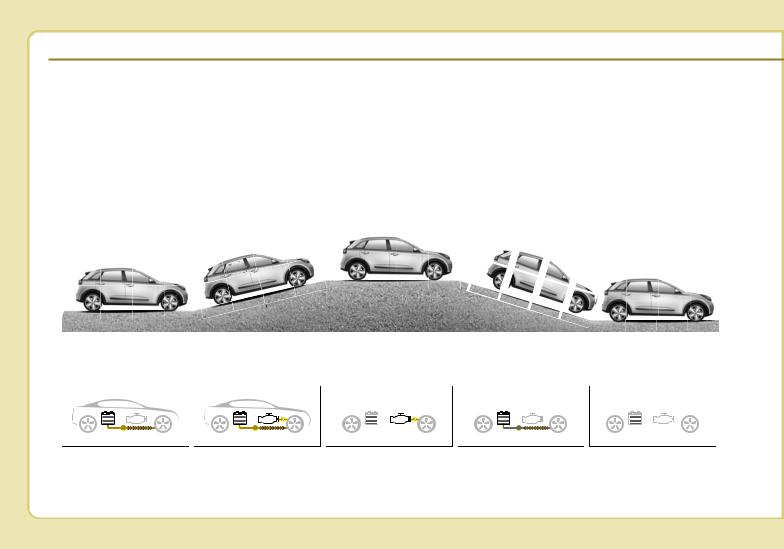
 HEV (HYBRID ELECTRIC VEHICLE) SYSTEM
HEV (HYBRID ELECTRIC VEHICLE) SYSTEM
The Kia Hybrid Electric Vehicle (HEV) uses both the gasoline engine and the electric motor for power. The electric motor is run by a 360V high-voltage HEV battery.
Depending on the driving conditions, the HEV computer selectively operates between the engine and the electric motor or even both at the same time.
Fuel efficiency increases when the engine is at idle, or when the vehicle is driven by the electric motor with the HEV battery.
The HEV battery charge must be maintained for the times when the engine acts as a generator, such as when stopped at idle. Charging also occurs when decelerating or by regenerative braking.
|
|
|
|
|
|
|
|
|
|
|
|
Engine+ |
|
|
|
|
|
|
|
|
|
|
|
|
|
|
|
|
|
|
|
Electric motor |
|
|
|
Electric motor+Engine |
|
|
|
|
|
|
|
|
|
|
Charging |
|
|
|
|
|
|
Engine OFF |
|
|
|
||
|
|
|
|
|
|
|
|
|
|
Motor or Motor |
|
|
|
|
|
|
|
|
|
|
|
|
|
||||||
|
|
|
|
|
|
|
|
|
|
|
|
|
|
|
|
|
|
|
|
|
|
|
|
|
|
|
|
||
|
|
|
|
|
|
|
|
|
|
|
|
|
|
|
|
|
|
|
|
|
|
|
|
|
|
|
|
|
|
|
|
|
|
|
|
|
|
|
|
|
|
|
|
|
|
|
|
|
|
|
|
|
|
|
|
|
|
|
|
|
|
|
|
|
|
|
|
|
|
|
|
|
|
|
|
|
|
|
|
|
|
|
|
|
|
|
|
|
|
|
Startup/Low speed cruise |
|
|
Acceleration |
|
|
|
High speed cruise |
|
|
|
Deceleration |
|
|
|
Stop |
|
||||||||||||
|
|
|
|
|
|
|
|
|
|
|
|
|
|
|
|
|
|
|
|
|
|
|
|
|
|
|
|
|
|
|
|
|
|
|
|
|
|
|
|
|
|
|
|
|
|
|
|
|
|
|
|
|
|
|
|
|
|
|
|
|
|
|
|
|
|
|
|
|
|
|
|
|
|
|
|
|
|
|
|
|
|
|
|
|
|
|
|
|
|
|
|
|
|
|
|
|
|
|
|
|
|
|
|
|
|
|
|
|
|
|
|
|
|
|
|
|
|
|
|
ODEP057140L
H2
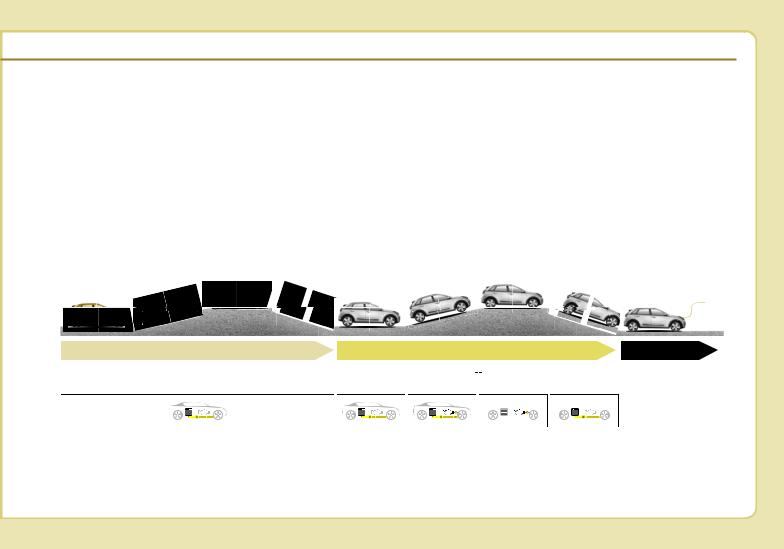
 PHEV (PLUG-IN ELECTRIC VEHICLE) SYSTEM
PHEV (PLUG-IN ELECTRIC VEHICLE) SYSTEM
The Kia Plug-in Hybrid Electric Vehicle (PHEV) shares the characteristics of both a conventional hybrid electric vehicle and an all-electric vehicle.
When used as a conventional hybrid electric vehicle, the HEV computer selectively operates between the engine and the electric motor or even both at the same time.
When it is operating in the electric vehicle mode, the vehicle is driven only using the electric motor over a certain distance until the hybrid battery becomes low. The driving distance in EV mode depends on customer driving style and road conditions. Aggressive driving maneuvers may at times temporarily enable the engine to operate for maximum power.
The hybrid battery can be fully charged by connecting a plug to an external electric power source.
The engine can be turned on due to factors such as heater usage and a frequent operation of the accelerator pedal by a driver in CD mode.
|
CD (Charge Depleting) Mode |
|
|
|
|
CS (Charge Sustaining) Mode |
|
|
|
|
|
|
|
|
|
|
|
|||||||||
|
|
|
|
|
|
|
|
|
|
|
|
Charging |
||||||||||||||
|
|
|
|
|
|
|
|
|
|
|
|
|
|
|
|
|
|
|
|
|
|
|
|
|
|
|
|
|
|
|
|
|
|
|
|
|
|
|
Engine+Motor |
|
|
|
|
|
|
|
|
|
|
|
|
|
|
|
|
Electric motor |
|
|
|
|
Motor |
|
|
Engine+Motor |
|
|
|
|
Charging |
|
|
|
|
|
Battery charging |
|
|
|||
|
|
|
|
|
|
|
|
|
or Motor |
|
|
|
|
|
|
|
|
|||||||||
|
|
|
|
|
|
|
|
|
|
|
|
|
|
|
|
|||||||||||
|
|
|
|
|
|
|
|
|
|
|
|
|
|
|
|
|
|
|
|
|
|
|
|
|
||
|
|
|
|
|
|
|
|
|
|
|
|
|
|
|
|
|
|
|
|
|
|
|
|
|
||
|
|
|
|
|
|
|
|
|
|
|
|
|
|
|
|
|
|
|
|
|
|
|
|
|
|
|
|
|
|
|
|
|
|
|
|
|
|
|
|
|
|
|
|
|
|
|
|
|
|
|
|
|
|
|
|
|
|
|
|
|
|
|
|
|
|
|
|
|
|
|
|
|
|
|
|
|
|
|
|
|
|
|
|
|
|
|
|
|
|
|
|
|
|
|
|
|
|
|
|
|
|
|
|
|
|
|
|
|
|
|
|
|
|
|
|
|
|
|
|
|
|
|
|
|
|
|
|
|
|
|
|
|
|
|
|
|
|
|
|
|
|
|
|
|
|
|
|
|
|
|
|
|
|
|
|
|
|
|
|
|
|
|
Electric Vehicle Mode |
|
Start up/Low speed |
|
Acceleration |
|
High speed |
|
|
Deceleration |
|
6 |
External charging |
|||||||||||||
|
|
|
|
|
|
|
|
|
|
|
|
|
|
|
|
|
|
|
|
|
|
|
|
|
|
|
|
|
|
|
|
|
|
|
|
|
|
|
|
|
|
|
|
|
|
|
|
|
|
|
|
|
|
|
|
|
|
|
|
|
|
|
|
|
|
|
|
|
|
|
|
|
|
|
|
|
|
|
|
|
|
|
|
|
|
|
|
|
|
|
|
|
|
|
|
|
|
|
|
|
|
|
|
|
|
|
|
ODEP057141L
H3
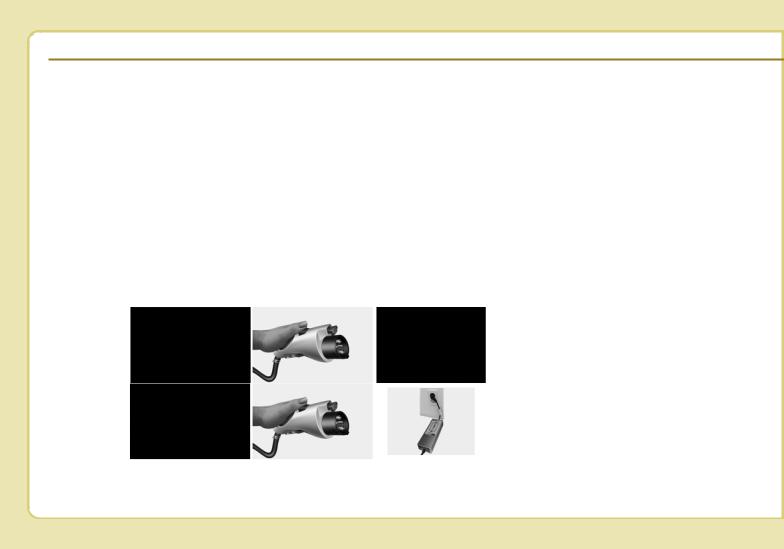
 CHARGING THE PLUG-IN HYBRID VEHICLE
CHARGING THE PLUG-IN HYBRID VEHICLE
Charging Information
•Normal Charger: The plug-in hybrid vehicle is charged by plugging into a normal charger installed in your home or a public charging station. (For further details, refer to the 'Normal Charge'.)
Charging Types
•Trickle Charger: The plug-in hybrid vehicle can be charged by using household electricity.
The electrical outlet in your home must comply with regulations and can safely accommodate the Voltage / Current (Amps) / Power (Watts) ratings specified on the trickle charge. Use only as a backup charger.
Charging Time
•Normal Charger: Takes about 2 hours 15 minutes at room temperature (Can be charged to 100%.). Depending on the condition and durability of the high-voltage battery, charger specifications, and ambient temperature, the time required for charging the high-volt- age battery may vary.
•Trickle Charger : Use in emergency situations only.
Category |
Charging Inlet |
Charging Connector |
Charging Outlet |
Charging Method |
Charging Time |
|
(Vehicle) |
||||||
|
|
|
|
|
||
|
|
|
|
|
|
|
|
|
|
|
Normal charger |
Approximately 2 hours |
|
Normal |
|
|
|
installed in homes |
15 minutes (to fully |
|
Charger |
|
|
|
or public charging |
charge the plug-in |
|
|
ODEPQ017018 |
ODEPQ017019 |
OJFHPQ016021L |
stations |
hybrid,100%) |
|
|
|
|
||||
Trickle |
|
|
|
Household current |
Use in emergency situ- |
|
Charger |
|
|
|
ations only. |
||
|
|
|
|
|||
|
ODEPQ017018 |
ODEPQ017019 |
OAEEQ016024 |
|
|
•Depending on the condition and durability of the high voltage battery, charger specifications, and ambient temperature, the time required for charging the high voltage battery may vary.
•Actual charger image and charging method may vary in accordance with the charger manufacturer.
H4
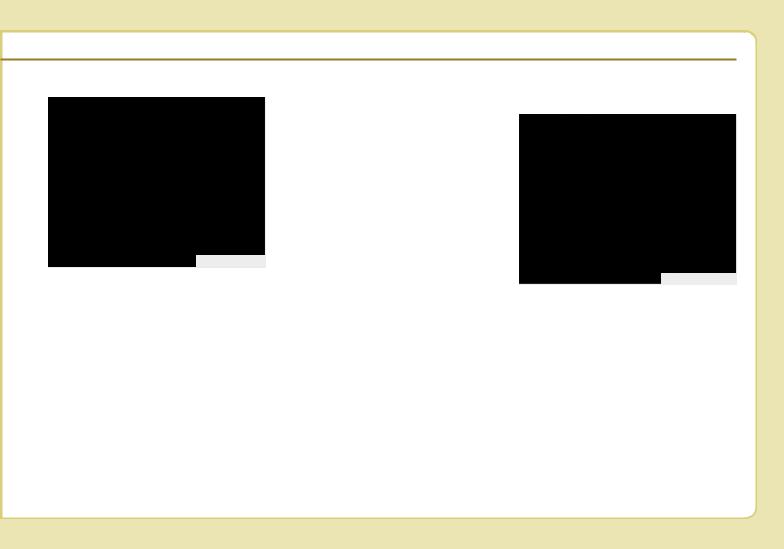
Charging Status
ODEP047020N
You can check the charging status at the outside of vehicle when charging or using (it is not driving status) the high-voltage battery.
: Charging indicator lamp
Operation of |
|
|
Charging Indicator |
Charging Status |
|
Lamp (1) |
|
|
Turns on (Green) |
Charging in |
|
progress |
||
|
||
Turns off |
Not Charging or |
|
fully charged |
||
|
||
|
|
|
Slowly blinks |
Waiting for sched- |
|
(Green) and then |
uled charging |
|
turns off (repeat |
(turns off after 3 |
|
for 3 minutes) |
minutes) |
|
|
|
|
Quickly |
|
|
blinks(Green) and |
Aux. Battery Saver |
|
then turns off |
+ operating in |
|
(repeats during |
progress |
|
operation) |
|
|
|
|
|
Slowly blinks (Red) |
Malfunction |
|
|
|
Charging Connector
AUTO/LOCK Mode
ODEPQ017021
You may select when the charging connector can be locked and unlocked in the charging inlet.
Press the button  to change between AUTO mode and LOCK mode.
to change between AUTO mode and LOCK mode.
H5
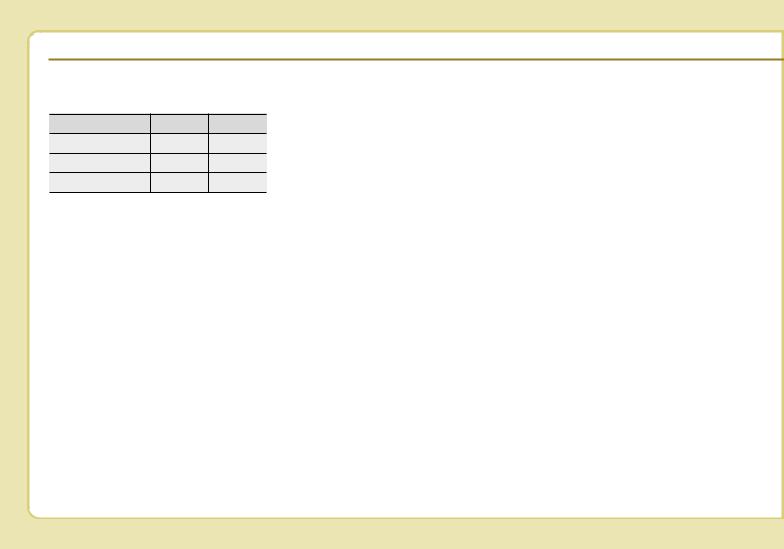
 CHARGING THE PLUG-IN HYBRID VEHICLE (CONT.)
CHARGING THE PLUG-IN HYBRID VEHICLE (CONT.)
When the Charging Connector is Locked
LOCK AUTO
Before charging |
O |
X |
While charging |
O |
O |
Finished charging |
O |
X |
•LOCK mode (button indicator off) :
The connector locks when the charging connector is plugged into the charging inlet. The connector is locked until all doors are unlocked by the driver.This mode can be used to prevent charging cable theft.
-If the charging connector is unlocked when all doors are unlocked, but the charging cable is not disconnected within 10 seconds, the connector will be automatically locked again.
-If the charging connector is unlocked when all doors are unlocked, but all doors are locked again, immediately, the connector will be automatically locked again.
•AUTO mode (button indicator on) :
The connector locks when charging starts. The connector unlocks when charging is complete. This mode can be used when charging in a public charging station.
Charging connector AUTO/LOCK mode
When the charging connector is plugged into the charging inlet, the connector lock timing varies with the modes selected by pressing the button.
•LOCK mode : The connector locks automatically when the charging connector is connected normally.
•AUTO mode : The connector locks when charging and automatically unlocks when charging is completed.
For more details, refer to the “Charging connector AUTO/LOCK mode”.
H6

Locking/unlocking the charging door
The charging door lock/unlock function works only when the following conditions are satisfied with the charging door closed.
If the unlock function does not work, use the emergency charging door unlock method to unlock the charging door. (For more details, refer to the “Unlock charging door in emergency”)
1. Conditions for lock :
−When locking doors from outside the vehicle with the charging door closed.
: When locking the driver’s door using a mechanical key
: When locking doors using a smart key
: When pressing the door lock/unlock button on the front door outside handle while the smart key is detected and doors are unlocked
2.Conditions for unlock :
−When unlocking doors from outside the vehicle with the charging door closed.
: When unlocking the driver’s door using a mechanical key
: When unlocking doors using a smart key
: When pressing the door lock/unlock button on the front door outside handle while the smart key is detected and doors are locked
Scheduled Charging (if equipped)
•You can set reserved charging using the AVN.
Refer to the AVN for detailed infor mation about setting reserved charging.
•Scheduled charging can only be done when using a normal charger or the portable charging cable (ICCB: In-Cable Control Box).
AVN : Audio, Video, Navigation
H7
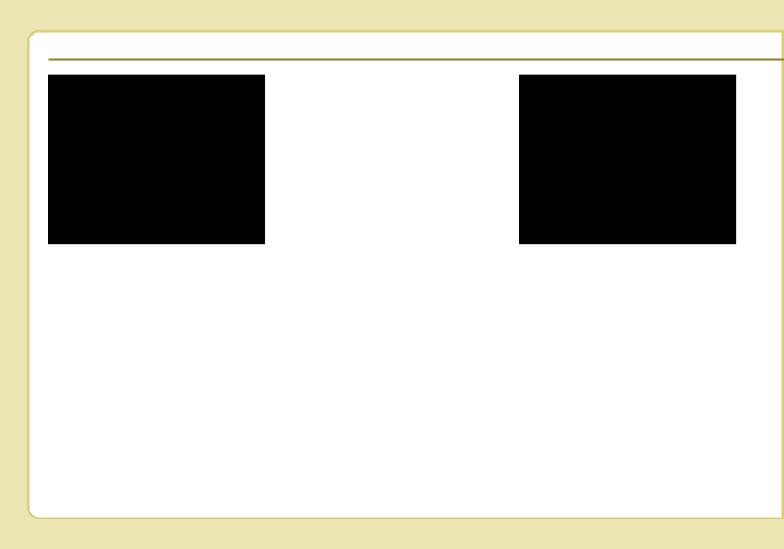
 CHARGING THE PLUG-IN HYBRID VEHICLE (CONT.)
CHARGING THE PLUG-IN HYBRID VEHICLE (CONT.)
ODEPQ017023
•When scheduled charging is set and the normal charger or the portable charging cable (ICCB: InCable Control Box) is connected for charging, the indicator lamp blinks (for 3 minutes) to indicate that scheduled charging is set.
H8
•When scheduled charging is set, charging is not initiated immediately when the normal charger or portable charging cable (ICCB: InCable Control Box) is connected.
•If charging is required immediately, turn off the scheduled charge using the vehicle’s touchscreen or UVO eco smartphone application or press the vehicle's scheduled
charge release button( ).
•When the scheduled charge is set, the charge start time is calculated by itself. In some cases, charging may start immediately after connecting the charger.
ODEPQ017022
• If you press the scheduled charging deactivation ( ) button to immediately charge the battery, charging must be initiated 3 minutes after the charging cable has been connected.
When you press the scheduled charging deactivation ( ) button for immediate charging, the scheduled charge setting is not completely deactivated. If you need to completely deactivate the scheduled charge setting, use the AVN to finalize the deactivation.
Refer to "Normal Charge or Trickle Charge" for details about connecting the normal charger and the portable charger (ICCB: In-Cable Control Box).
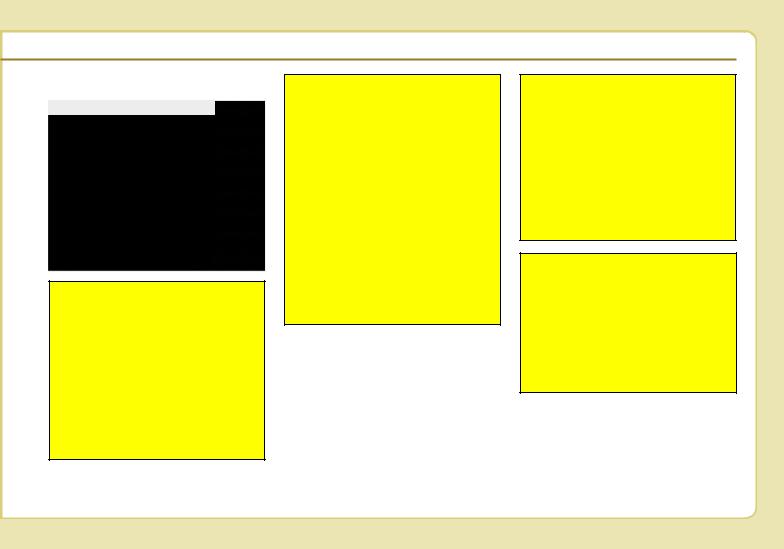
Charging Precautions
■ Normal Charger
OJFHPQ016021L
WARNING
-Fires caused by dust or water
Do not connect the charging cable connector plug to the vehicle if there is water or dust on the charging inlet. Connecting while there is water or dust on the charging cable connector and plug may cause a fire or electric shock.
WARNING
-Interference with electronic medical devices
When using medical electric devices such as an implantable cardiac pacemaker, make sure to ask the medical team and manufacturer whether charging your electric vehicle will impact the operation of the medical devices. In some instances, electromagnetic waves that are generated from the charger can seriously impact medical electric devices such as an implantable cardiac pacemaker.
WARNING
-Touching the charging connector
Do not to touch the charging connector, charging plug, and the charging inlet when connecting the cable to the charger and the charging inlet on the vehicle. Doing so may result in electrocution.
WARNING
- Public Electric Outlets
Do not use old or worn out public electric outlets to charge your vehicle. There may be a risk of fire and injury when using old worn out public electrical outlets.
H9
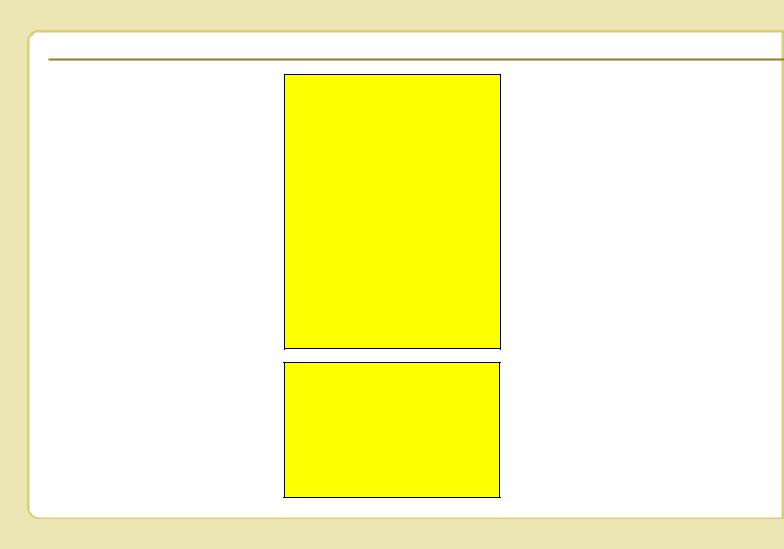
 CHARGING THE PLUG-IN HYBRID VEHICLE (CONT.)
CHARGING THE PLUG-IN HYBRID VEHICLE (CONT.)
•Comply with the following in order to prevent electrical shock when charging:
-Use a waterproof charger
-Make sure to not touch the charging connector and charging plug when your hand is wet
-Do not charge when there is lightning
-Do not charge when the charging connector and plug is wet
WARNING - Charging
cable
•Immediately stop charging when you find abnormal symptoms (smell, smoke).
•Replace the charging cable if the cable coating is damaged to prevent electrical shock.
•When connecting or removing the charging cable, make sure to hold the charging connector handle and charging plug.
If you pull the cable itself (without using the handle), the internal wires may disconnect or get damaged.This may lead to electric shock or fire.
WARNING - Cooling fan
Do not touch the cooling fan while vehicle is charging. When the vehicle is switched OFF while charging, the cooling fan inside the engine compartment or interior rear seat may automatically operate.
•Always keep the charging connector and charging plug in clean and dry condition. Be sure to keep the charging cable in a condition where there is no water or moisture.
•Make sure to use the designated charger for charging the vehicle. Using any other charger may cause failure.
•Before charging the battery, turn the vehicle OFF.
•Be careful not to drop the charging connector. The charging connector can be damaged.
•Always inspect the charging connector terminals for damage or overheating. Do not use if damaged, as this may damage the vehicle side charge connector and is not a warrantable repair.
H10
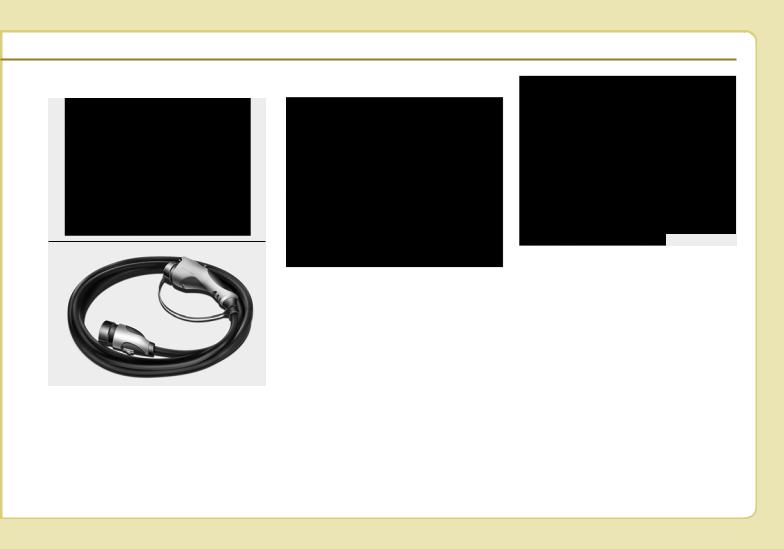
Normal Charge
■ Normal Charger
OJFHPQ016021L
■ Normal charger cable
OAEEQ016028
You can charge your vehicle by plugging into a public charger at a charging station.
How to Connect Normal Charger
ODEPQ017025
1.Depress the brake pedal and apply the parking brake.
2.Turn OFF all switches, move the shift lever to P (Park), and turn OFF the vehicle.
3.After unlocking doors, open the charging door by pressing it.
NOTICE
The charging door does not open the doors are locked/theft alarm system is armed.
ODEPQ017026
4.Remove any dust on the charging connector and charging inlet.
5.Hold the charging connector handle. Then, insert it into the charging inlet, until you hear a click sound. If it is not fully connected, a bad connection between the charging connector and the charging terminals may cause a fire.
H11
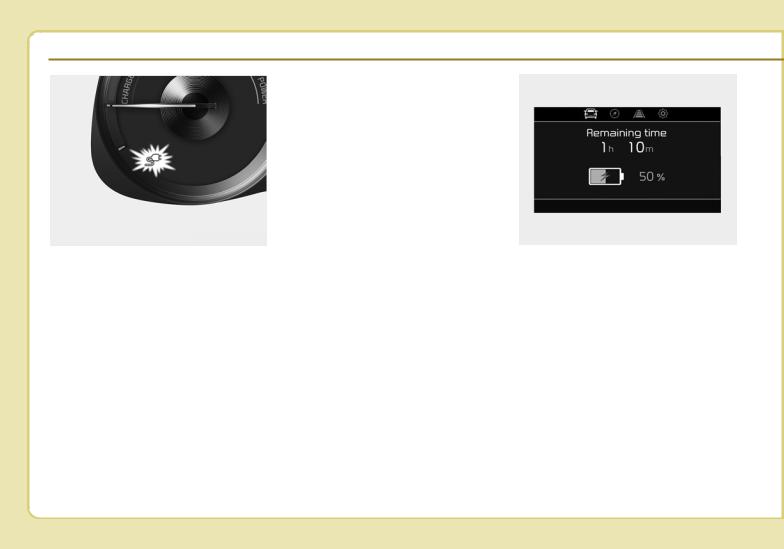
 CHARGING THE PLUG-IN HYBRID VEHICLE (CONT.)
CHARGING THE PLUG-IN HYBRID VEHICLE (CONT.)
ODEPQ017027
6.Check if the charging cable connection indicator of the high voltage battery in the instrument cluster is turned ON.
Charging does not occur when the indicator is OFF. When the charging connector is not connected properly, reconnect the charging cable to charge.
NOTICE
•Charging is in progress only when the shift lever is in P (Park). Charging the battery with the Engine Start/Stop button in the ACC position is possible. However, it may discharge the 12-V battery. Thus, if possible, charge the battery with the Engine Start/Stop button in the OFF position.
•The charging process is interrupted temporarily when the shift lever is moved from P (Park) to Not P(R (Reverse)/N (Neutral)/D (Drive)) during charging. To resume(restart) charging, move the shift lever to the P(park) position. Then, the charging process is resumed(restarted).
ODEPQ017028L
7.After charging has started, the estimated charging time is displayed on the instrument cluster for about 1 minute. It is also displayed, when the driver’s door is opened with charging in progress. When scheduled charging is set, the estimated charging time is displayed as “--" .
H12

Unlock Connector in Emergency |
Charging Status |
|
Checking Charging Status |
ODEPQ017029
If the charging connector does not unlock for some reason, open the hood and slightly pull the emergency cable as shown above. The charging door will then open.
If a charging door is not opened immediately with emergency cable in operation, press a charging door lightly and pull emergency cable again.
ODEP047020N
You can check the charging status at the outside of vehicle when charging or using (it is not driving status) the high-voltage battery.
Operation of |
|
|
Charging Indicator |
Charging Status |
|
Lamp (1) |
|
|
Turns on (Green) |
Charging in |
|
progress |
||
|
||
Turns off |
Not Charging or |
|
fully charged |
||
|
||
|
|
|
Slowly blinks |
Waiting for sched- |
|
(Green) and then |
uled charging |
|
turns off (repeat |
(turns off after 3 |
|
for 3 minutes) |
minutes) |
|
|
|
|
Quickly |
|
|
blinks(Green) and |
Aux. Battery Saver |
|
then turns off |
+ operating in |
|
(repeats during |
progress |
|
operation) |
|
|
|
|
|
Slowly blinks (Red) |
Malfunction |
|
|
|
H13

 CHARGING THE PLUG-IN HYBRID VEHICLE (CONT.)
CHARGING THE PLUG-IN HYBRID VEHICLE (CONT.)
How to Disconnect Normal Charger
1.The vehicle must be in the AUTO mode or the doors must be unlocked in order to be able to disconnect the charging connector. A lock system prevents charger cable disconnection when the vehicle's doors are locked.
CAUTION
In order to disconnect the charging connector, unlock the doors to unlatch the charging connector lock system. If not, the charging connector and the vehicle's charging inlet may be damaged.
ODEPQ017031
2.While holding the charging connector, pressing the locking release button (1) and then pull it out.
To prevent charging cable theft, the charging connector cannot be disconnected from the inlet when the doors are locked. Unlock all doors to disconnect the charging connector from the inlet.
However, if the vehicle is in the charging connector AUTO mode, the charging connector automatically unlocks from the inlet when charging is completed.
For more details, refer to “Charging Connector AUTO/ LOCK Mode” in this chapter.
CAUTION
When disconnecting the charging connector, do not try to disconnect it by force while not pressing the release button. This may damage the charging connector and vehicle charging inlet.
H14
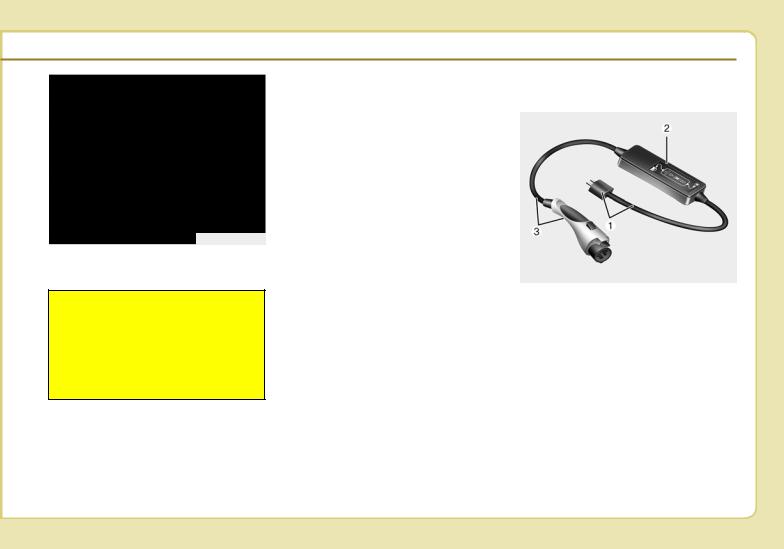
NOTICE
•Keep the charging connector and the charging plug clean and dry. The charging cable should also be kept dry.
•Use an air gun to blow any foreign substances from the charging connector and the charging plug.
Trickle Charger
(Portable Charging Cable)
ODEPQ017032
3.Make sure to securely close the charging door.
WARNING
Do not modify or disassemble the charging cable components. Doing so may cause a fire or electric shock resulting in personal injuries.
OAEEQ016042
Trickle charger can be used if Normal Charger is unavailable.
: Plug and cable
: Control box (ICCB)
: Charging connector/cable
H15
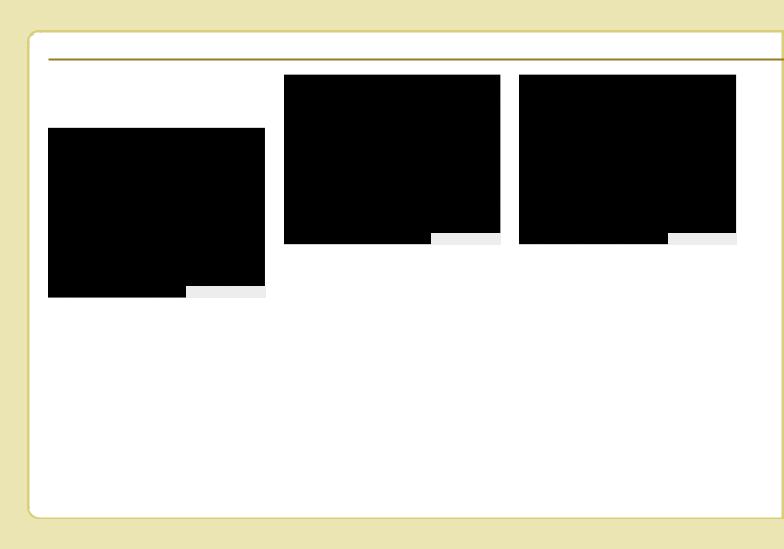
 CHARGING THE PLUG-IN HYBRID VEHICLE (CONT.)
CHARGING THE PLUG-IN HYBRID VEHICLE (CONT.)
How to Connect Portable Charging Cable
(ICCB: In-Cable Control Box)
ODEPQ017025
3. After unlocking doors, open the charging door by pressing it.
OJFHPQ016015N
1.Turn OFF all switches, move the shift lever to P (Park), and turn OFF the vehicle.
2.Depress the brake pedal and apply the parking brake.
ODEPQ017047
4.Connect the plug to a household electric outlet.
5.Make sure that the power connection indicator (green) lights in the control box.
NOTICE
The charging door does not open when the theft alarm system is armed.
H16
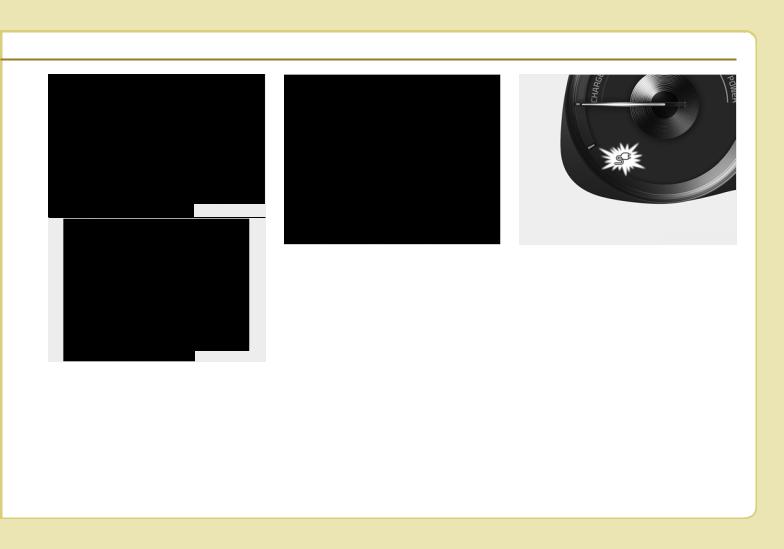
ODEPQ017049
■ Vehicle connection
ODEPQ017048
6.Remove any dust on the charging connector and charging inlet.
7.Hold the charging connector handle. Then, insert it into the charging inlet, until you hear a click sound. If it is not fully connected, improper connection between the charging connector and the charging terminals are a potential fire hazard.
■ Charge
ODEPQ017035
8.Charging starts automatically and the charging light blinks.
ODEPQ017027
9.Check if the charging cable connection indicator of the high voltage battery in the instrument cluster is turned ON.
Charging does not occur when the indicator is OFF. When the charging connector is not connected properly, reconnect the charging cable to charge.
H17
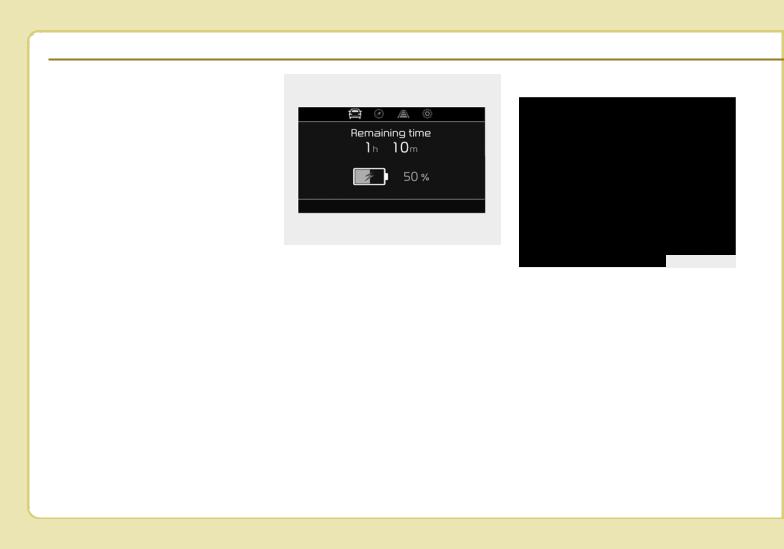
 CHARGING THE PLUG-IN HYBRID VEHICLE (CONT.)
CHARGING THE PLUG-IN HYBRID VEHICLE (CONT.)
NOTICE
•The charging is in progress only with the shift lever is in P (Park). Charging the battery with the Engine Start/Stop button in the ACC position is possible. However, it may discharge the 12-V battery. Thus, if possible, charge the battery with the Engine Start/Stop button in the OFF position.
•Moving the shift lever from P (Park) to R (Reverse)/N(Neutral)/D (Drive) stops the charging process. To restart the charging process, move the shift lever to P (Park), press the Engine Start/Stop button to the OFF position, and disconnect the charging cable. Then, connect the charging cable and restart the vehicle again.
ODEPQ017028L
10.After charging has started, the estimated charging time is displayed on the instrument cluster for about 1 minute. It is also displayed, when the driver’s door is opened with charging in progress. When scheduled charging is set, the estimated charging time is displayed as "--".
Unlock Connector in Emergency
ODEPQ017029
If the charging connector does not unlock for some reason, open the hood and slightly pull the emergency cable as shown above. The charging door will then open.
If a charging door is not opened immediately with emergency cable in operation, press a charging door lightly and pull emergency cable again.
H18
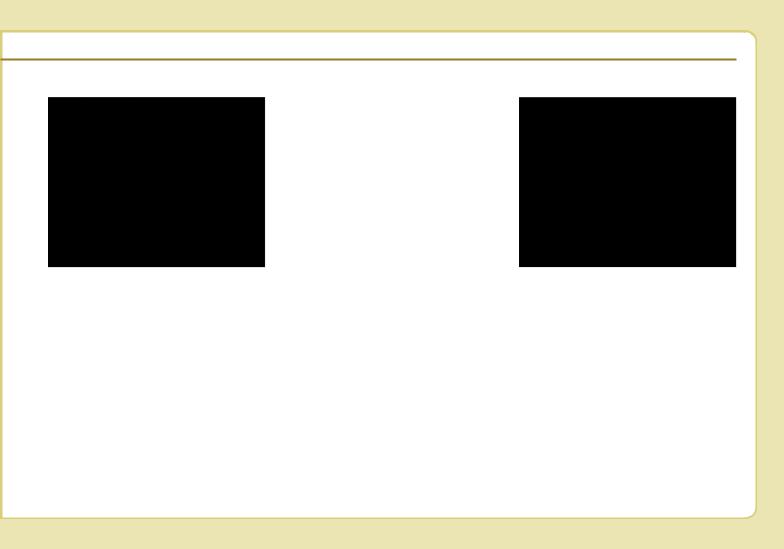
Charging Status
ODEP047020N
You can check the charging status at the outside of vehicle when charging or using (it is not driving status) the high-voltage battery.
Operation of |
|
|
Charging Indicator |
Charging Status |
|
Lamp (1) |
|
|
Turns on (Green) |
Charging in |
|
progress |
||
|
||
Turns off |
Not charged or |
|
fully charged |
||
|
||
Slowly blinks |
Waiting for sched- |
|
(Green) and then |
uled charging |
|
turns off (repeat |
(turns off after 3 |
|
for 3 minutes) |
minutes) |
|
|
|
|
Quickly |
|
|
blinks(Green) and |
Aux. Battery Saver |
|
then turns off |
+ operating in |
|
(repeat during |
progress |
|
operation) |
|
|
|
|
|
Slowly blinks (Red) |
Malfunction |
|
|
|
Charge cable storage
ODEPQ017033
We recommend that the trickle charger cable should be put in a storage box after use.
H19

 CHARGING THE PLUG-IN HYBRID VEHICLE (CONT.)
CHARGING THE PLUG-IN HYBRID VEHICLE (CONT.)
Charging Status Indicator Lamp for Portable Charging Cable
|
Control Box |
Indicator |
|
|
Details |
|||
|
|
|
|
|
|
|
|
On : Power on |
|
|
|
|
|
|
|
|
Blink : Plug temperature sensor failure |
|
|
|
|
PLUG |
|
(Green) |
|
|
|
|
|
|
|
|
|
On : Plug high temperature protection |
|
|
|
|
|
|
|
|
|
|
|
|
|
|
|
|
|
|
Blink : Plug high temperature warning |
|
|
|
|
|
|
(Red) |
||
|
|
|
|
|
|
|
||
|
|
|
|
POWER |
|
|
|
On : Power on |
|
|
|
|
|
|
|
||
|
|
|
|
|
|
|
||
|
|
|
|
|
|
|
|
|
|
|
|
|
CHARGE |
|
|
|
Blink : Charging In power saving mode, only the CHARGE |
|
|
|
|
|
|
|
indicator is illuminated. |
|
|
|
|
|
|
|
|
|
|
|
|
|
|
FAULT |
|
|
|
Blink : Charging interrupted |
|
|
|
|
|
|
|
|
|
|
|
|
|
|
|
|
|
Charging current 12A |
|
|
|
|
|
|
|
|
|
|
|
|
|
CHARGE LEVEL |
|
|
|
Charging current 10A |
|
|
|
|
|
|
|
|
|
|
|
|
|
|
|
|
|
Charging current 8A |
|
|
|
|
|
|
|
|
|
|
|
|
|
|
|
|
|
Charging connector plugged |
|
|
|
|
|
|
|
|
|
|
|
|
|
|
|
(Green) |
|
|
|
|
|
|
VEHICLE |
|
|
|
Charging |
|
|
|
|
|
|
|
|
|
|
|
|
|
|
|
(Blue) |
|
|
|
|
|
|
|
|
|
|
Blink : Charging impossible |
|
|
|
|
|
|
|
|
|
|
|
|
|
|
|
(Red) |
|
|
H20
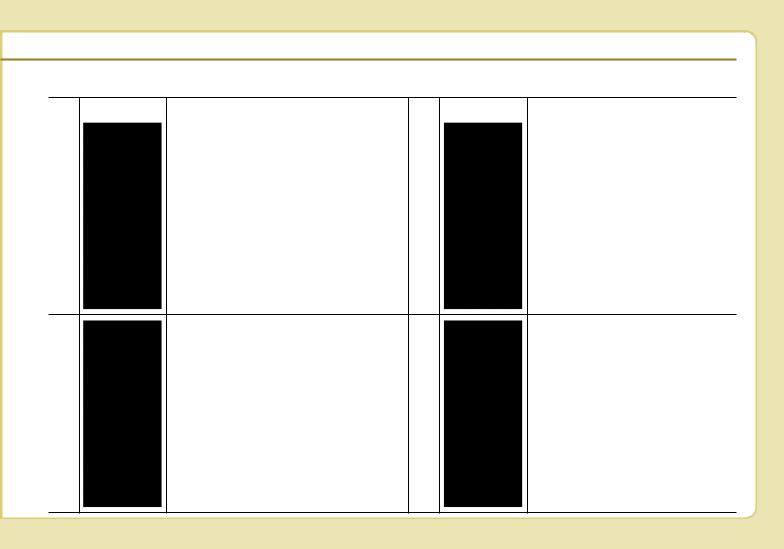
Charging Status Indicator Lamp for Portable Charging Cable
NO Control Box |
|
Status / Diagnosis / Countermeasure |
NO |
Control Box Status / Diagnosis / Countermeasure |
|
|
• |
Charging connector plugged into vehicle |
|
|
|
|
|
(Green ON) |
|
|
|
|
• |
Plug temperature sensor failure |
|
|
|
|
|
(Green blink) |
|
|
|
1 |
• |
Plug high temperature protection |
2 |
|
- Charging connector plugged into |
|
(Red blink) |
|
vehicle (Green ON) |
||
|
|
|
|
||
|
• |
Plug high temperature warning (Red ON) |
|
|
|
|
Have your vehicle inspected by an authorized |
|
|
|
|
|
Kia dealer. |
|
|
|
|
|
|
|
|
|
|
|
|
|
|
- |
Before plugging charging connector |
|
|
|
|
|
into vehicle (Red blink) |
|
- |
While charging |
|
|
• Abnormal temperature |
3 |
|
• Charge indicator (Green blink) |
4 |
|
• ICCB (In-Cable Control Box) failure |
|
|
• Vehicle indicator (Blue ON) |
|
|
|
|
|
|
|
Have your vehicle inspected by an |
|
|
|
|
|
authorized Kia dealer. |
|
|
|
|
|
|
|
H21
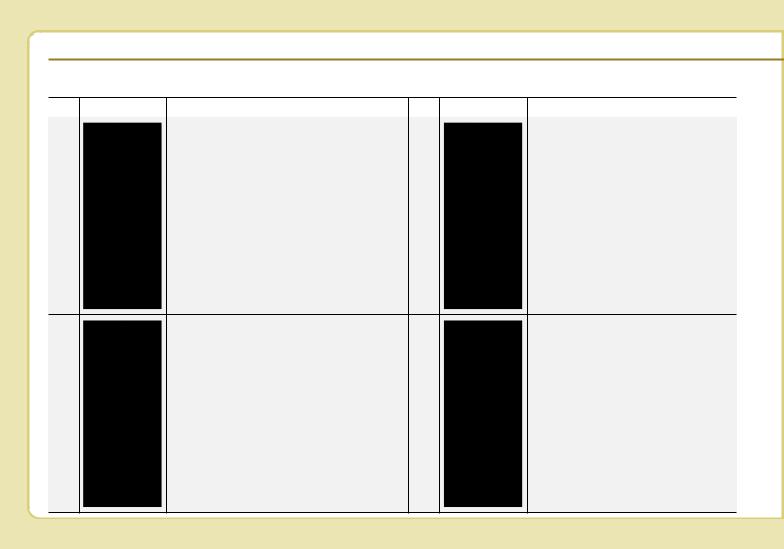
 CHARGING THE PLUG-IN HYBRID VEHICLE (CONT.)
CHARGING THE PLUG-IN HYBRID VEHICLE (CONT.)
NO Control Box |
Status / Diagnosis / Countermeasure |
NO Control Box Status / Diagnosis / Countermeasure |
||
- |
Plugged into vehicle (Red blink) |
|
- After plugging charging connector |
|
|
• Diagnostic device failure |
|
||
|
|
into vehicle (Red blink) |
||
|
• Current leakage |
|
||
5 |
6 |
• Communication failure |
||
• Abnormal temperature |
||||
|
||||
Have your vehicle inspected by an Have your vehicle inspected by an authorized authorized Kia dealer.
Kia dealer.
|
• |
Plug temperature sensor failure |
|
|
|
|
|
(Green blink) |
|
|
|
|
• |
Plug high temperature protection |
- |
Power saving mode |
|
|
|
(Red blink) |
|||
7 |
|
8 |
• 3 minutes after charging starts |
||
• |
Plug high temperature warning (Red ON) |
||||
|
|
(Green blink) |
|||
|
|
|
|
Have your vehicle inspected by an authorized
Kia dealer.
H22
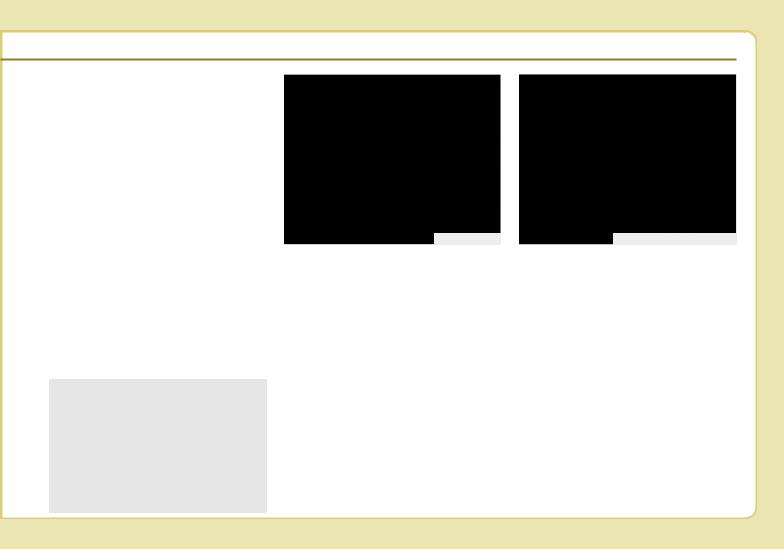
How to Disconnect PortableCharging Cable
(ICCB: In-Cable Control Box)
1.Before disconnecting the charging connector, make sure the doors are unlocked. When the door is locked, the charging connector lock system will not allow disconnection. To prevent charging cable theft, the charging connector cannot be discon nected from the inlet when the doors are locked. Unlock all doors to disconnect the charging connector from the inlet. However, if the vehicle is in the charging connector AUTO mode, the charging connector automatically unlocks from the inlet when charging is completed. For more details, refer to “Charging Connector AUTO/LOCK Mode” in this chapter.
CAUTION
In order to disconnect the charging connector, unlock the doors to unlatch the charging connector lock system. If not, the charging connector and the vehicle's charging inlet may be damaged.
ODEPQ017031
2.While holding the charging connector, pressing the locking release button(1) and then pull it out.
3.Make sure to securely close the charging door.
OJFHPQ016015N
4.Disconnect the plug from the household electric outlet. Do not pull the cable when disconnecting the plug.
5.Close the protective cover for the charging connector so that foreign material cannot get into the terminal.
6.Put the charging cable inside the storage bag to protect it.
H23

 CHARGING THE PLUG-IN HYBRID VEHICLE (CONT.)
CHARGING THE PLUG-IN HYBRID VEHICLE (CONT.)
Precautions for Portable Charging Cable
(ICCB: In-Cable Control Box)
•Use the portable charging cable that is certified by Kia.
•Do not try to repair, disassemble, or adjust the portable charging cable.
•Do not use an extension cord or adapter.
•Stop using immediately if failure warning light occurs.
•Do not touch the plug and charging connector with wet hands.
•Do not touch the terminal part of the normal charging connector and the normal charging inlet on the vehicle.
•Do not connect the charging connector to voltage that does not comply with regulations.
•Do not use the portable charging cable if it is worn out, exposed, or there exists any type of damage on the portable charging cable.
•If the ICCB case and normal charging connector is damaged, cracked, or the wires are exposed in any way, do not use the portable charging cable.
•Do not let children operate or touch the portable charging cable.
•Keep the control box free of water.
•Keep the normal charging connector or plug terminal free of foreign substances.
•Do not step on the cable or cord. Do not pull the cable or cord and do not twist or bend it.
•Do not charge when there is lightning.
•Do not drop the control box, charging connector, or place a heavy object on the control box.
•Do not place an object that can generate high temperatures near the charger when charging.
•Charging with the worn out or damaged household electric outlet can result in a risk of electric shock. If you are in doubt to the household electric outlet condition, have it checked by a licensed electrician.
•Stop using the portable charging cable immediately if the household electric outlet or any components is overheated or you notice burnt odors.
H24
